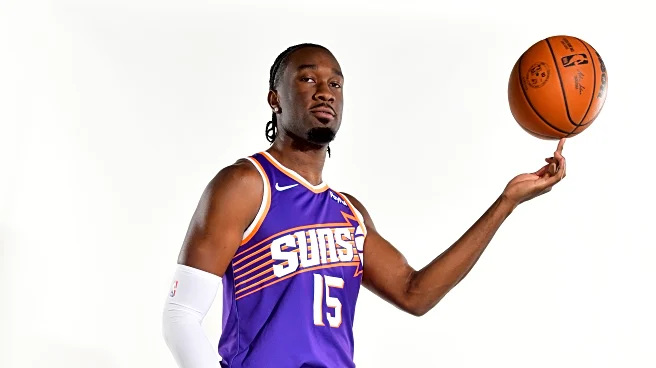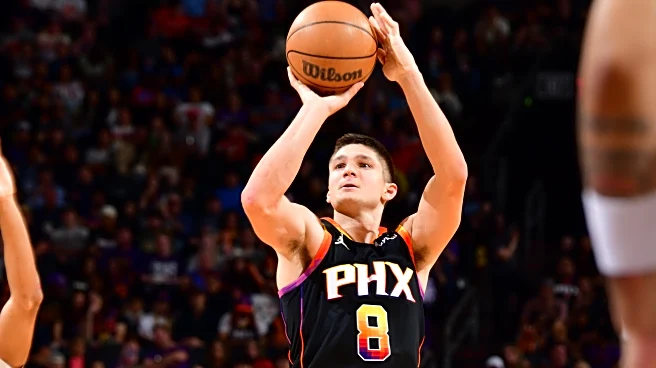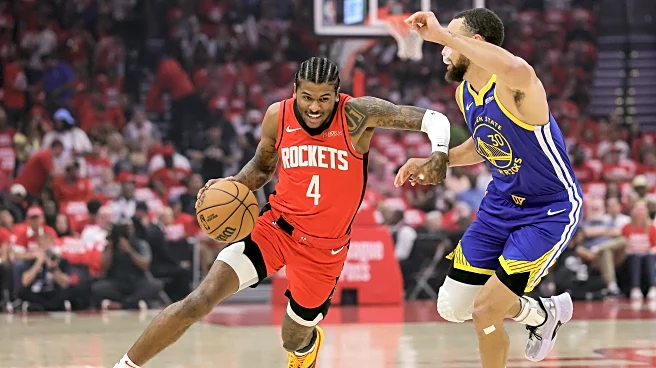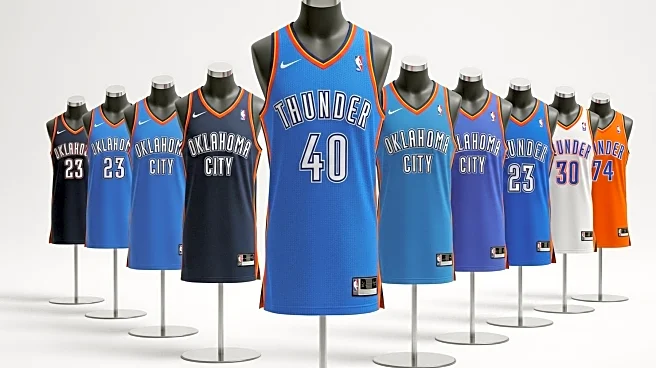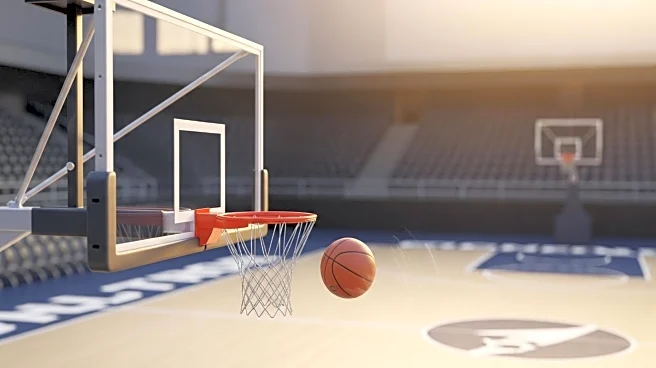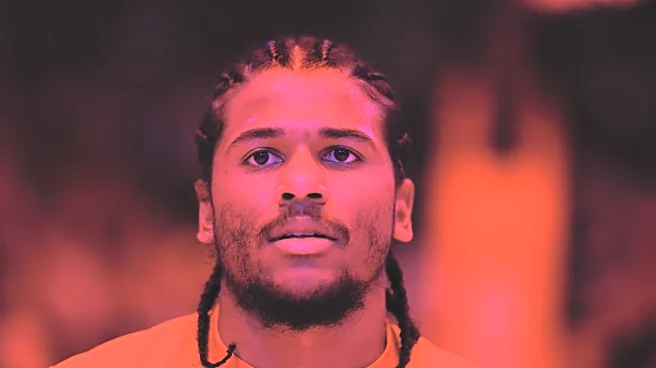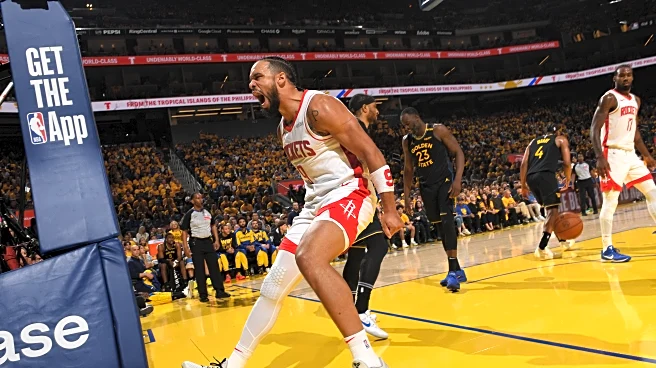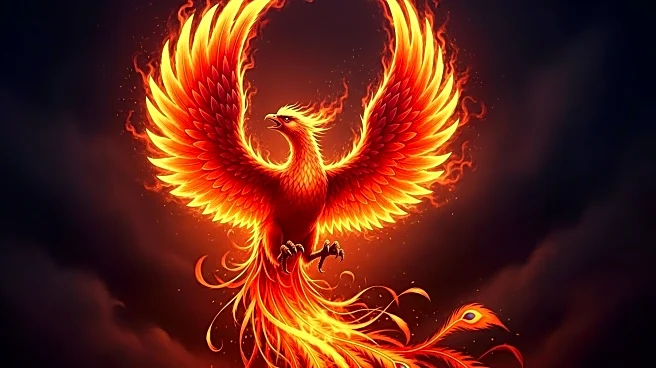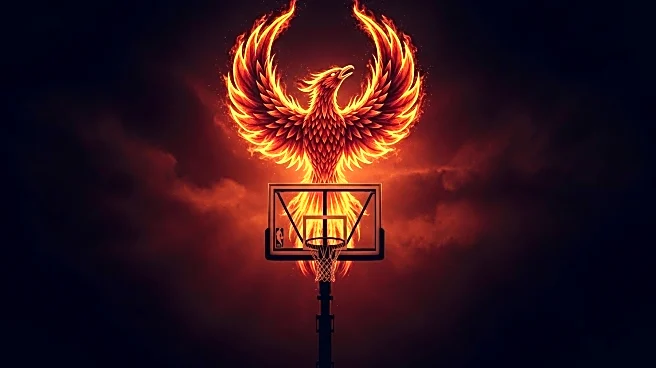
Mark Williams
Center, 7’0”, 241 pounds, 23 years old, 3 years of NBA experience
The center position has always been the bedrock of basketball. The last line of defense, the first guardian of the rim. At its core, this game is about a ball finding its way through a hoop, and no one stands closer to that truth than the big man in the middle.
For the Phoenix Suns, that spot has been a riddle in recent years. Jusuf Nurkic brought size and savvy, but his feet were made of stone. Deandre Ayton had springs in his legs,
but a motor that sputtered when the moment demanded more.
Now, the franchise is swinging again, and this time it’s for balance. Athleticism and drive, power and hunger. Enter Mark Williams, the Suns’ new anchor in the paint, acquired on draft night for Vasa Micic and two first-round picks.
Mark Williams is young. He’ll turn 24 in December. And he carries a résumé that reads like a blueprint for a future star. IMG Academy. Duke. A top-25 recruit in the 2020 high school class. The pedigree is there, no question.
But pedigree isn’t the problem. The problem is the body. Williams has played in 106 of a possible 246 games with Charlotte, barely more than 40% of his career. And that’s the gamble Phoenix is taking. This isn’t some tidy, risk-free pickup. This is the franchise sliding its chips to the center of the table, betting on a trend the league rarely rewards: that an injured center can suddenly stay healthy. History doesn’t love that bet.
But if he does stay upright? If the injuries finally stop haunting him? Williams is a walking double-double, a rim protector who can tilt the geometry of the game. And maybe he becomes the cornerstone for the cultural reset the Suns are trying to engineer.
2024-25 Recap
Mark Williams’ 2024-25 campaign was anything but smooth. He opened the year in street clothes, missing the first 20 games with a strained tendon in his left foot. When he finally returned, he reminded everyone why he was supposed to be Charlotte’s future at the five. Playing in 23 of the next 27 games and putting up a rock-solid 15.6 points and 9.6 rebounds per night.
Then came the February drama.
The Lakers — desperate for size, desperate for a spark — went all-in, shipping Dalton Knecht, Cam Reddish, a 2031 unprotected first, and a 2030 pick swap to Charlotte for Williams. It was the kind of trade that shakes a franchise’s identity. And then it blew up.
Williams failed his physical, reportedly because of long-term concerns about his back. The Lakers backed out, the Hornets hit reset, and the deal vanished.
Call me a cynic, but I think this was as much about optics as it was about MRIs. Knecht was playing like a man possessed in his rookie campaign, and the backlash in Lakerland was loud. “Back issue” makes a neat excuse to undo a deal that suddenly looked like an overpay.
None of that stopped Williams from quietly cooking once the deadline passed.
From that point forward, he averaged 14.9 points, 10.8 rebounds, and looked completely healthy. His full-season line? 15.3 points, 10.2 boards, 60.4 percent shooting…and 44 games played out of 82. Not perfect, but far from damaged goods.
Contract Details
Williams is on the final year of his rookie deal and is slated to make $6.3 million this season. The former 15th overall pick will be a restricted free agent after this season unless an extension is signed with Phoenix. The qualifying offer will be $8.8 million.
Strengths & Weaknesses
Mark Williams’ strengths jump off the screen. He’s a brick wall in the paint, a true interior anchor. Sure, he drops a little too deep in pick-and-roll coverage sometimes, but he’s a bona fide rim deterrent, a vacuum on the glass, and the kind of defensive presence you can build a scheme around. That matters when your backcourt features Jalen Green and Devin Booker, two guys whose gifts are offensive first, second, and third. Williams lets them gamble, lets them take risks, because he’s the guy erasing mistakes behind them.
But this isn’t a perfect marriage. Offensively, Williams is limited. Eight feet from the rim is his frontier. Anything beyond that is foreign soil.

He won’t stretch the floor, won’t drag big men out of the paint, won’t force defenses to think twice. Which might explain why we saw Khaman Maluach firing threes in Summer League. If we ever want to see these twin towers on the court together, someone has to possess the ability to stretch the floor and shoot. Any frontcourt with Williams and Oso Ighodaro is going to be paint-clogged and slow-paced.
And then there’s the elephant in the training room. His health.
The best ability is availability, and Williams hasn’t consistently had it. That’s why his acquisition cost felt reasonable. That’s why the gamble makes sense. But if…and it’s a big if…he stays healthy? He’s not a perfect center, but he’s the kind of center you win with. Top-third in the league. Big enough, strong enough, focused enough to be the quiet backbone of a team trying to rediscover its identity.
One Key Factor
I’ve spent the entire offseason hammering the health drum when it comes to Mark Williams. And yes, that’s still the key factor. But let’s look at something different.
The Suns haven’t had a true lob threat since Deandre Ayton left town. And even when DA was here, the lob was the only consistent play. And even then, he played like he was afraid of the rim, not mad at it. The minute you bounced him the ball on a pick-and-roll, however, chaos followed. The catch wasn’t clean, the timing was off, the possession was often dead on arrival.
That’s where Williams can separate himself. He’s not just a vertical threat. He’s got to become a pick-and-roll finisher who can catch in traffic, go straight up, and punish defenses before the help arrives. That split-second matters. Hold it too long, bring it too low, and the ball’s getting stripped. We’ve seen that movie before.
Turnovers were one of Williams’ biggest issues in Charlotte (1.6 a game). If he cleans that up, if he becomes decisive and strong with the ball, he doesn’t just give Phoenix a lob target, he gives them an actual interior weapon. And that, maybe more than his rim protection, is the thing that could unlock this offense.
Prediction Time
Mark Williams is one of the hardest players on this roster to project because everything hinges on that one variable: health. And if I’m being honest, I think it’s going to hold him back again this season.
The Suns know this, though. That’s why Nick Richards and Khaman Maluach are here. They’re like Geico geckos. Insurance policies in human form. Their presence means Phoenix can be patient, can give Williams the extra time he needs to get right without grinding him into dust. It’s all baked into the acquisition, part of the plan.
I don’t see him playing more than half the games. But in the ones he does play? He’ll matter. He’ll control the glass, tilt possessions, and give Phoenix the physical interior presence they’ve lacked. And for a team trying to rediscover its identity, that’s exactly where they need to start. By owning the boards.
Stat Prediction: 49 games played, 12.8 PPG, 2.1 APG, 10.8 RPG
Final Thoughts
I loved the Mark Williams acquisition. Sure, some people blasted it because it came right on the heels of drafting Maluach, but in the same breath, it felt like a deep exhale. For once, the center rotation was shored up, on draft night, no less. That alone was a small victory.
The past few seasons have been frustrating. Jusuf Nurkic and Mason Plumlee as your center duo with undersized Oso as the only backup option? That wasn’t a plan, that was a patch job. And it showed. The Suns were abysmal on the glass, soft at the rim, and too often outmuscled in the paint.
Williams’ arrival changes that. It solidifies what the Suns want to be and backed up what GM Brian Gregory promised in his opening press conference. That this team is going to attack the rim, on both ends. Mission accomplished, at least on paper. Now it’s time to see if that vision actually translates to the floor.
